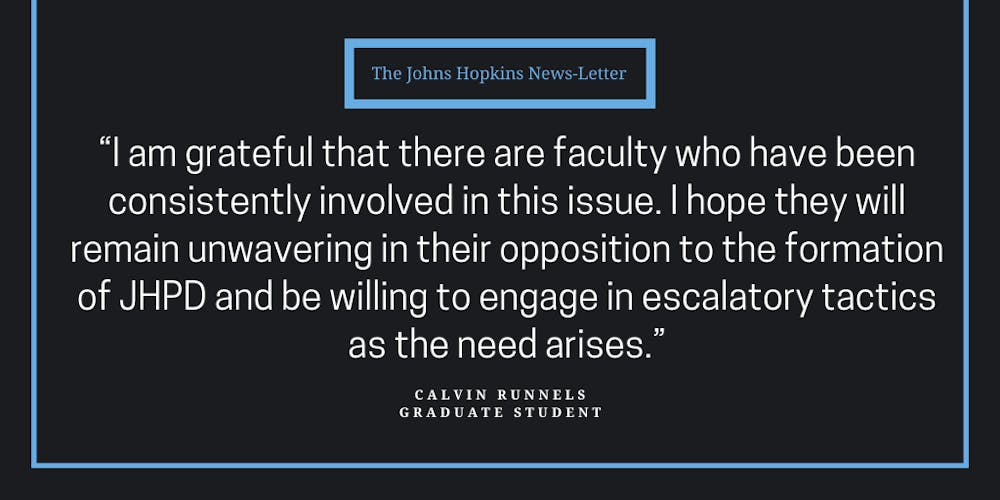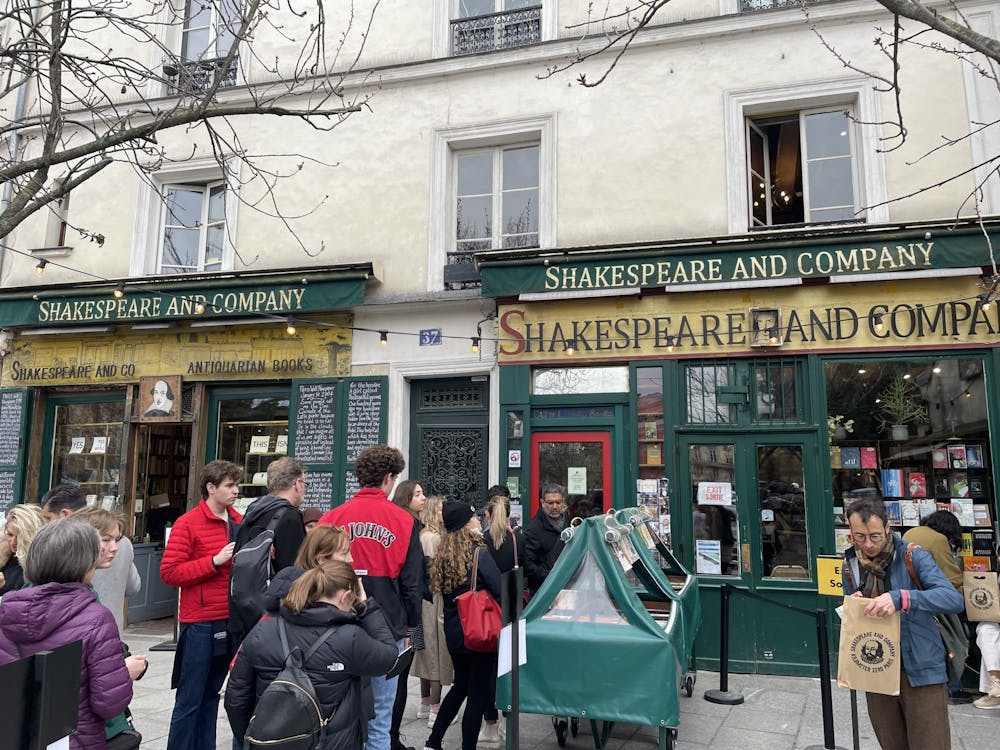The Krieger School of Arts and Sciences (KSAS) Faculty Senate Police Committee organized a virtual assembly on the Johns Hopkins Police Department (JHPD) analyzing the process the administration is making toward establishing the JHPD. The event took place on Monday, Feb. 26 and welcomed faculty, staff, students and the general public.
The presenters included Lester Spence, who is a professor of Political Science and Africana Studies as well as the chair of the KSAS Faculty Senate Police Committee, and Claude Guillemard, a professor of Modern Languages and Literatures and a member of the committee.
In an email to The News-Letter, Spence explained that the general purpose of the public assembly was to assess the JHPD’s current implementation.
“The remit of the KSAS Senate Police Committee is to informally oversee and critically investigate the rollout process for the JHPD,” he wrote. “With everything going on, the police rollout has fallen under the radar, and it's a pretty important policy decision, as it potentially affects a broad swath of the Hopkins and Baltimore community.”
In an interview with The News-Letter, Calvin Runnels, a second-year doctoral student opposed to the formation of the JHPD, talked about his perspective on the assembly.
“I am grateful that there are faculty who have been consistently involved in this issue,” he said. “I hope they will remain unwavering in their opposition to the formation of JHPD and be willing to engage in escalatory tactics as the need arises, rather than falling into the trap of unintentionally legitimizing the process by participating in efforts to reform it from the inside.”
Spence presented a brief overview of the progress the University has made since March 2018, when President Ronald J. Daniels first announced the intent to form a private police force. The most recent update involved the release of draft policies in Fall 2023. Beyond outlining the key dates concerning the installation of the JHPD, Spence highlighted significant protest and opposition at every stage in the timeline.
“Within a very short period of time, you got opposition from faculty bodies, student organizations and also from community stakeholders,” he wrote. “We see the longest sit-ins in Johns Hopkins history, petitions against the proposal by over 6000 individuals and 50 organizations.”
Spence addressed two main misconceptions about the need for the JHPD. First, he explained that the notion that crime around campus is increasing is unfounded, according to data from the last decade. Second, the belief that Hopkins police are required to carry weapons is false on a legal basis.
“There are several challenges inherent with granting public power to private agencies, but one of the things we are most concerned with is the idea of giving legitimate power to commit violence to private actors,” he stressed.
Referencing an earlier letter to President Daniels by Black faculty, Spence shared several concerns over the establishment of the JHPD, which include the over-policing of Black and brown populations, incompatibility with the most common form of crimes students experience (sexual harassment), potential to create tension and insecurity within the wider community, and inadequate accountability.
The committee then transitioned to analyzing the current status of the JHPD. Guillemard continued the conversation around accountability as she referenced the Johns Hopkins University Police Accountability Board (JH Accountability Board), a public channel first introduced in 2019 to ensure community voices influence the development and operation of the JHPD.
Guillemard emphasized that though JH Accountability Board members are charged with sharing community feedback with JHPD leadership, this is not happening.
“The Accountability Board is a misnomer. 13 out of 15 of its membership [seats] are [appointed] directly by Hopkins. It is not an independent body. Personally, I think it is more of an advisory board,” she said.
The KSAS Faculty Senate Police Committee found several issues concerning institutional barriers to the JH Accountability Board. Notably, the board does not have a website or an independent email. Other issues include meetings being held virtually on an annual basis without sufficient public correspondence and the lack of contacting outlets putting the promised transparency of the board into question.
Alum Joan Floyd presented a critique of the ambiguity around the JHPD’s boundary of jurisdiction, especially the specific qualifications regarding sidewalks and private property in the vicinity of University property.
“No consistent principle has been applied,” she stated. “When Hopkins property occupies one side of a divided roadway, sometimes both sides of the roadway are claimed, while other times only one side is claimed.”
Spence believes there are many ways that Hopkins members can contribute to this collective effort of keeping the University accountable.
“One that we're suggesting for individuals who are both members of the Hopkins community and residents of Baltimore is to reach out to the City Council and ask it to hold a public hearing,” he noted.
The assembly was brought to a close with a statement from Odette Ramos, a Baltimore City Council representative, who underscored the Council's dedication to ongoing oversight of the University's activities.
“We will continue to monitor the situation at the council level. Our goal now is to ensure that the policies they are going to pass are actually applicable and up to standard,” she said.
Editor’s Note, 2024: A previous version of this article incorrectly stated Joan Floyd’s position and misattributed the pull quote.
The News-Letter regrets these errors.





